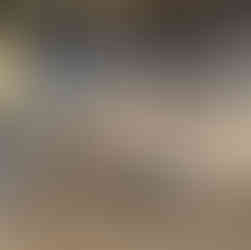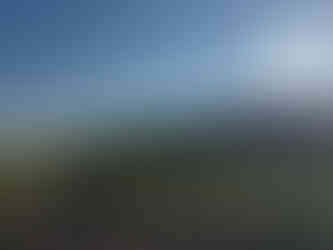Beautiful Bute Day
- John Burkinshaw
- May 13
- 4 min read
The Wednesday was my day off and Kathryn and I made the most of having the full day to take a trip to Bute on the ferry. I had had a look at Google Maps and picked a few things that looked interesting, which I had never seen before either, so it would be interesting for both of us.
First was Wester Kames Castle was a short walk up a farm track to a tower house of typically Scottish design for large houses. It dates from around 1700, and was once the seat of the Spense family. By 1895 it formed part of the Marquess of Bute's estate, and only the ground floor was standing. The 3rd Marquess of Bute commissioned the architect Robert Weir Schultz to rebuild the tower in 1897. It was locked up unfortunately but it was a nice walk to see it.
Next was North Bute Parish Churchyard. This was a bonus location whihc we just happened to drive past, and who could resist calling in on this derelict chuch with it's extensive graveyard. The church is beautiful and it's a strange experience standing inside what was once a place of reverance. We wandered round the churchyard afterwards, looking at the dates on the headstones and trying to work out the reason for so many youngsters buried there in the late 1800's.
We continued on to St Colmac Cottages Stone Circle for a quick look at the stones in the middle of a farmer's field. It is a late Neolithic or early Bronze Age stone circle of seven stones, though there may have originally been more. The stones are set within a circular bank enclosing an old beech plantation, although all the trees have been lost to time or storms.
Saint Michael's Chapel was a wonderful 1.6 mile walk along the coast on the west side of the island, under tree canopy, with glimpses of the water through the branches all the way. Then down, across a field to a small stone enclosure around the ruin of the chapel, a common feature of early Celtic Christian sites, and the surprise of a small graveyeard and wonderful views out over the Kyles of Bute towards Kames. The roofless chapel probably dates between the 5th and 7th centuries. The walls are of locally quarried schist bonded by clay. The stone alter is still in place. We sat and shared a small easter egg and breathed in the fresh air and the warmth of the sunshine, then explored the sublime location of this tiny chapel. The more we looked the more graves we found, many of which were just plain rocks placed to mark the locations of the burials, but some of which were obviously for more wealthy families. What a tranquil spot to be laid to rest.
Along the walk to the chapel we passed a tiny van, miles from anywhere and all on it's own, and thought what a lovely place to spend a week or three. We also passed a farm shed filled with sheep with the most spectacular horns. It was then well past time for lunch and, after a quick look into the victorian toilets (to complete Kathryn's experience of Bute), we hit Gather Deli for some lentil soup and a toasted ham and cheese sandwich with the satisfying addition of pickled gherkins. It's a gorgeous little deli and cafe with quirky decor and a really friendly welcome. We grabbed a couple of delicious lemon meringue pies from Helmi's next door and headed off to our next destination.
St. Blane's Chapel is a short drive from Rothesay followed by a short walk up hill to the quite extensive site. You can't see it from the road, or the path until you crest the hill and it comes into view. The nave and part of the chancel date back to the 1200s. The churchyards contain a lot of weathered grave slabs including a distinctive hogsback gravestone from the time when Bute was part of the Norse Empire. The are also the remains of a well and the foundations of a manse which was in use until 1587, plus a small garden with a very new memorial in situ. There has been a religious site here since the 500s when St Catan established a monastery which was eventually abandoned in the wake of viking raids. At one time St Blane’s served the whole of the Isle of Bute but it fell into disuse following the Protestant Reformation. We sat and ate our lemon meringue pies and listened to slightly demented baaing of the nearby sheep and the incessant cawing of the many resident rooks.
By the time we had walked down to the car we had decided that the final thing on my list was one thing too many and we were tired. But as we drove towards it on the way back to the ferry we decided it didn't look that far from the road and we should do it for sake of completion of the isle of Bute. I wasn't sure what we would find at Dunagoil Vitrified Fort as there weren't any photos showing much of anything at the site, but it was a short climb up a small rock formation, past sheep and cows and ending with another view over the water and a drop big enough to hold your breath while standing at the edge. There was really nothing of interest, but we felt good for completing our day with one last view of the sparkling blue kyles and the slowly sinking sun.









































Comments